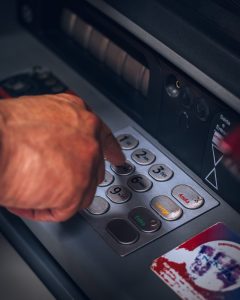Forex trading is a popular way to invest and potentially earn profits from the fluctuations in currency exchange rates. Fidelity Investments is a well-known brokerage firm that offers forex trading services to its clients. If you are interested in trading forex with Fidelity, here is a guide to help you get started.
1. Open an Account
Before you can start trading forex with Fidelity, you need to open a brokerage account. This can be done through Fidelity’s website, by filling out an online application. You will be asked to provide personal information, such as your name, address, and social security number. You will also be asked to provide information about your investment experience and financial goals.
Once your account is approved, you can fund it with a minimum of $2,500. You can transfer funds from an existing Fidelity account or from an external bank account. You can also deposit checks or wire funds.
2. Choose a Forex Trading Platform
Fidelity offers two trading platforms for forex trading: Active Trader Pro and Wealth-Lab Pro. Active Trader Pro is a web-based platform that offers real-time quotes, advanced charting, and customizable trading tools. Wealth-Lab Pro is a desktop-based platform that allows you to backtest trading strategies and automate trades.
Both platforms offer access to a wide range of currency pairs, including major pairs like EUR/USD, GBP/USD, and USD/JPY, as well as exotic pairs like USD/ZAR and USD/TRY. You can also trade futures and options on currency pairs.
3. Learn the Basics of Forex Trading
Before you start trading forex, it’s important to understand the basics of how the market works. Forex trading involves buying one currency and selling another currency at the same time. The exchange rate between the two currencies determines the value of the trade.
For example, if you believe that the euro will appreciate against the dollar, you would buy EUR/USD. If the exchange rate goes up, you can sell the euro for a profit. If the exchange rate goes down, you will incur a loss.
Forex trading involves a high degree of risk, and it’s important to understand the risks before you start trading. You should also have a solid understanding of technical analysis, which involves using charts and indicators to identify trading opportunities.
4. Develop a Trading Strategy
To be successful at forex trading, it’s important to have a trading strategy. A trading strategy is a set of rules that you follow when entering and exiting trades. Your strategy should be based on your risk tolerance, investment goals, and market conditions.
Some popular trading strategies for forex trading include:
– Trend following: This strategy involves buying currencies that are trending higher and selling currencies that are trending lower.
– Breakout trading: This strategy involves buying currencies when they break above a resistance level or selling currencies when they break below a support level.
– Range trading: This strategy involves buying currencies when they are at the bottom of a range and selling currencies when they are at the top of a range.
5. Monitor Your Trades
Once you start trading forex, it’s important to monitor your trades closely. You should set stop-loss orders to limit your losses if the market moves against you. You should also take profits when the market moves in your favor.
It’s also important to stay up-to-date on market news and events that can impact currency exchange rates. Fidelity provides a range of research and analysis tools to help you stay informed, including news headlines, economic calendars, and market commentary.
In conclusion, trading forex with Fidelity can be a lucrative investment opportunity if you approach it with caution and discipline. By opening an account, choosing a trading platform, learning the basics of forex trading, developing a trading strategy, and monitoring your trades, you can increase your chances of success.






